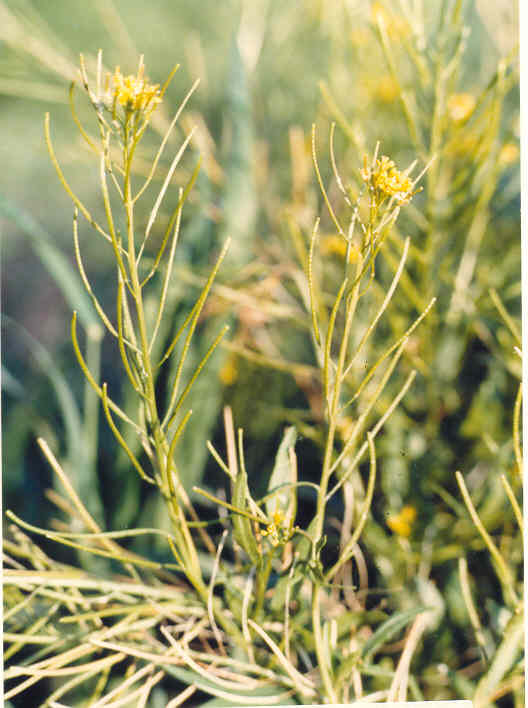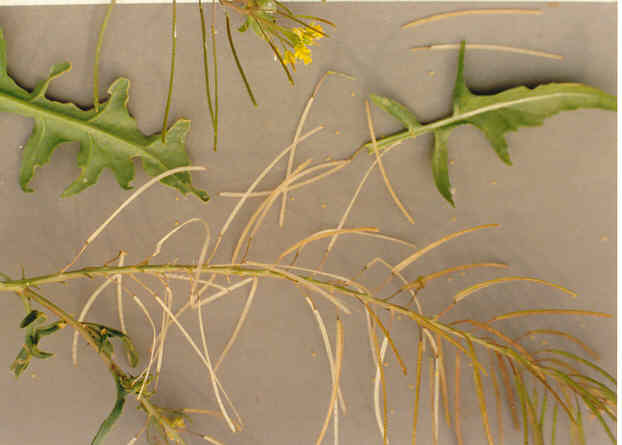
Sisymbrium irio L.
Brassicaceae
(Mustard Family)
Europe
 |
Sisymbrium irio L.Brassicaceae
(Mustard Family)
Europe
London Rocket |
Plant Characteristics:
Erect annual, 2-8 dm. tall, glabrous, branched above;
glabrous, pinnatifid leaves with one or two pair of lobes below a large
subdeltoid terminal lobe; upper leaves reduced; racemes long, many-fld.;
pedicels filiform, ascending, 6-10 mm. long; sepals 2-2.5 mm. long; petals
yellow, 3-4 mm. long; siliques 1.5-5 cm. long, ascending more than spreading,
seeds light brown, shining, oblong-ovate.
Habitat:
Cismontane S. Calif., common in orchards, waste places, occasional on
desert; to TX, Baja CA. Below 800 m. Jan.-July.
Name:
Sisymbrium is Greek for some
plant of the Mustard Family. Irio
refers to a kind of cress. (Dale
86).
General:
Common in the study area. Photographed
on the Castaway's Bluffs and the North Star Flats.
In 1991, a dry year until March when it rained heavily, S.
irio grew profusely in much of the area that was normally covered with the
genus Brassica.
In some areas, the Brassica, matured late and became taller than the S.
irio but by this time S. irio had
already matured. (my comments). The Indians used the leaves for food.
(Heizer and Elsasser 251).
A genus of some size as here recognized; native of the temperate parts of
the world. Ours all introduced from
Europe. (Munz, Flora
So. Calif. 301).
Text Ref:
Hickman, Ed. 438; Munz, Calif. Flora 231; Munz, Flora
So. Calif. 301; Roberts 16.
Photo Ref:
Feb 1 83 # 34; May 2 83 # 7; Feb 2 84 # 22.
Identity: by R. De Ruff, confirmed by F. Roberts.
Computer Ref:
Plant Data 14.
Have plant specimen.
Last edit 10/23/02.
 |